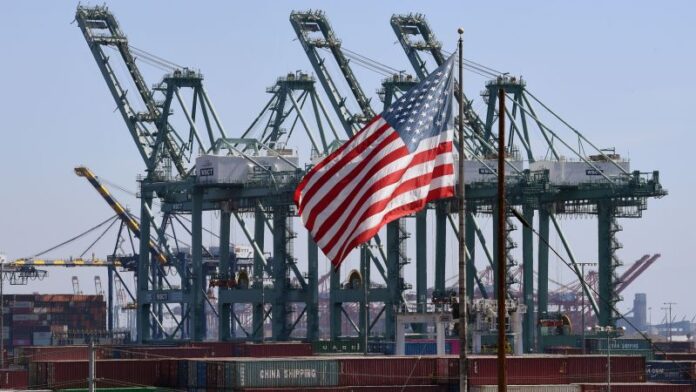The U.S. trade deficit widened to $71.5 billion in May, up 18.7 percent from the previous month, as exports declined more sharply than imports, according to data released Thursday by the Commerce Department’s Bureau of Economic Analysis.
The increase in the trade gap follows a revised April figure showing the deficit narrowed to $60.3 billion. Despite the larger deficit in May, lower imports could still support a rebound in economic growth during the second quarter.
Exports fell 4.0 percent to $279.0 billion. Goods exports dropped 5.9 percent to $180.2 billion, led by a $10.0 billion decline in industrial supplies and materials, including non-monetary gold, natural gas, and finished metal shapes.
Capital goods exports decreased by $1.9 billion due to lower shipments of semiconductors, aircraft engines, and telecom equipment, though exports of computer accessories and consumer goods, including pharmaceutical products, rose slightly.
Service exports edged down by $0.2 billion to $98.8 billion, mostly due to weaker travel and transport services.
Imports dipped 0.1 percent to $350.5 billion. Goods imports also fell 0.1 percent to $277.7 billion. Consumer goods imports were down $4.0 billion, with declines in textiles, household goods, toys, and sporting goods.
Imports of pharmaceutical products rose. Industrial supplies and materials imports decreased, mostly due to lower volumes of finished metal shapes, while nuclear fuel material imports increased.
Motor vehicle and parts imports rose by $3.4 billion, and capital goods imports were up $0.3 billion, driven by computer purchases. However, imports of computer accessories fell by $2.8 billion.
Imports of services dropped by $0.1 billion to $72.8 billion, with lower transport and travel services outweighing small gains in other business and maintenance services.
In the first quarter, the trade deficit reduced gross domestic product by a record 4.61 percentage points, contributing to a 0.5 percent annualized drop in GDP. A recovery in trade is expected in the second quarter, though it may be partly offset by weak consumer spending.
Ongoing effects from U.S. tariffs continue to influence trade flows, as businesses and households front-load purchases to avoid higher costs. Economists expect it will take time for these distortions to work through the data.




